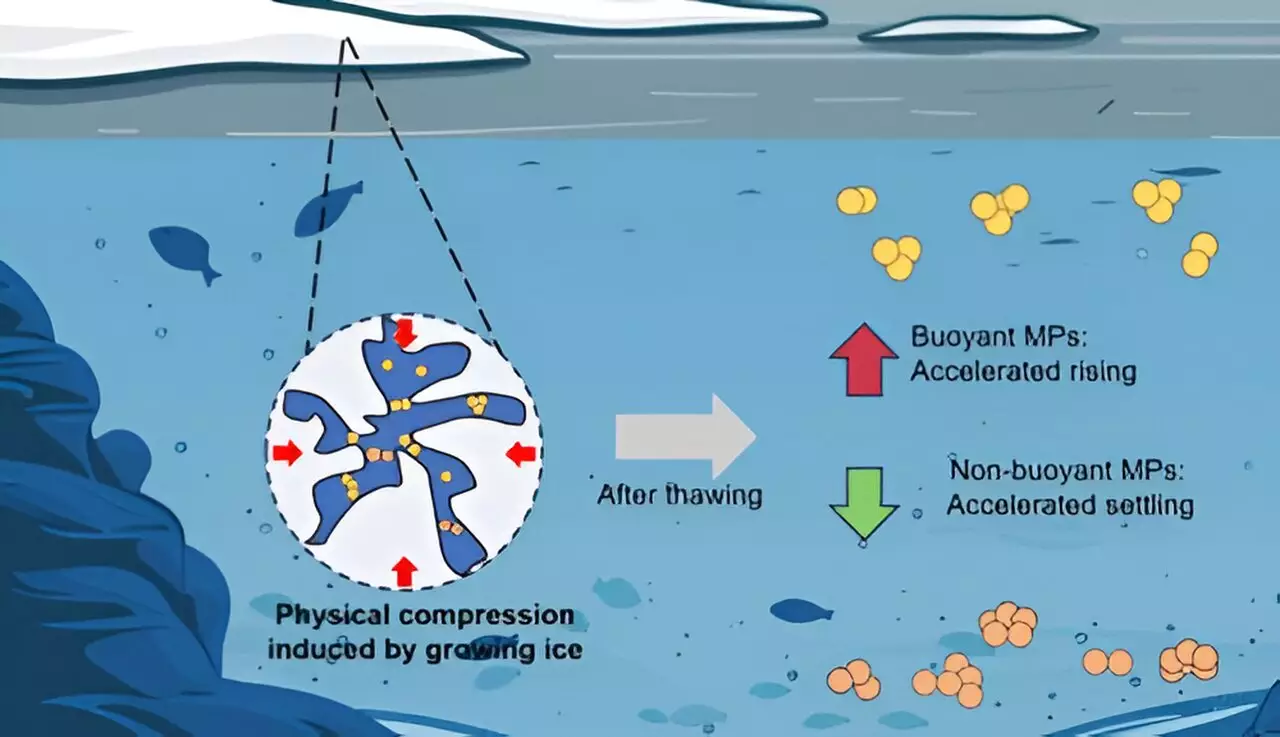In today’s world, plastic pollution poses a significant threat to marine and freshwater ecosystems. As industries continue to produce an overwhelming amount of plastics, these materials often break down into minute particles known as microplastics. These particles, measuring less than five millimeters in diameter, can be found almost everywhere—from the deepest oceans to the remote Arctic. A startling revelation is that these microplastics also interact with environmental phenomena like freezing, which changes their behavior in unexpected ways.
When lakes and rivers freeze, a surprising transformation occurs. Ice not only traps microplastics but also alters their physical properties. A study recently published in Environmental Science & Technology explores how freezing affects microplastics, shedding light on the potential consequences for aquatic life. Researchers found that the characteristics of microplastics, including size and buoyancy, can significantly change when they are subjected to freezing and thawing cycles, impacting their fate in water bodies.
Different types of polymers exhibit distinct behaviors in aquatic environments. Polyethylene (PE), for instance, is less dense than water, allowing it to float. In contrast, polyurethane (PU) and polytetrafluoroethylene (PTFE) have densities that cause them to sink. This fundamental difference in buoyancy plays a critical role in determining whether microplastics will accumulate in sediments at the bottoms of lakes and rivers or remain suspended in the water column.
The recent study emphasizes that environmental conditions—such as salinity, particle size, and buoyancy—affect microplastics’ behavior significantly. The process of freezing introduces complexities, as particles may become larger or behave differently when subjected to temperature variations. By understanding these dynamics, researchers hope to elucidate how microplastics affect ecosystem health and sedimentation processes.
Chunjiang An and his research team conducted experiments in both freshwater and saltwater to investigate the influence of freezing on microplastics. They observed that particles from PE, PU, and PTFE increased in size after being frozen and thawed. Interestingly, the increase was most pronounced in PE, which expanded by 46%, while PU only increased by 9%. This distinction is attributed to PE’s hydrophobic quality, which causes it to repel water and form larger clumps.
The study revealed that salinity levels played a crucial role; higher salinity seemed to prevent significant size changes in the polymers after freezing. Researchers indicated that brine channels within the ice may allow for trapped particles to remain separate, preventing them from coalescing into larger aggregates.
Understanding the physical principles governing microplastic movement is key to grasping their environmental impact. The researchers calculated the interplay of gravitational, buoyant, and drag forces acting on the particles. Their findings indicated that after freezing and thawing, microplastics would rise or sink more rapidly than they would under stable temperature conditions. This acceleration in movement may lead to greater sedimentation rates, raising concerns about polluting aquatic ecosystems.
The implications of this study are far-reaching, as they suggest that even temporary freezing could significantly alter the pathways of microplastics in aquatic systems. While the experiment analyzed a relatively short freezing period, natural environments can experience prolonged freezing—lasting months or even years. This indicates that the effects observed in the laboratory setting might be even more pronounced in real-world scenarios.
Furthermore, the findings could have significant ramifications for environmental policy and management strategies aimed at addressing plastic pollution. Understanding how environmental changes, including seasonal freezing, affect microplastics is crucial in formulating effective clean-up responses and pollution mitigation strategies.
As the climate continues to change and our understanding of microplastic dynamics evolves, it becomes ever more essential to research and comprehend the hidden interactions between frozen water bodies and plastic contaminants. The findings of this study provide a foundation for further investigations into how environmental factors influence the fate of microplastics, paving the way for improved protection measures to safeguard our water systems against plastic pollution.


Leave a Reply